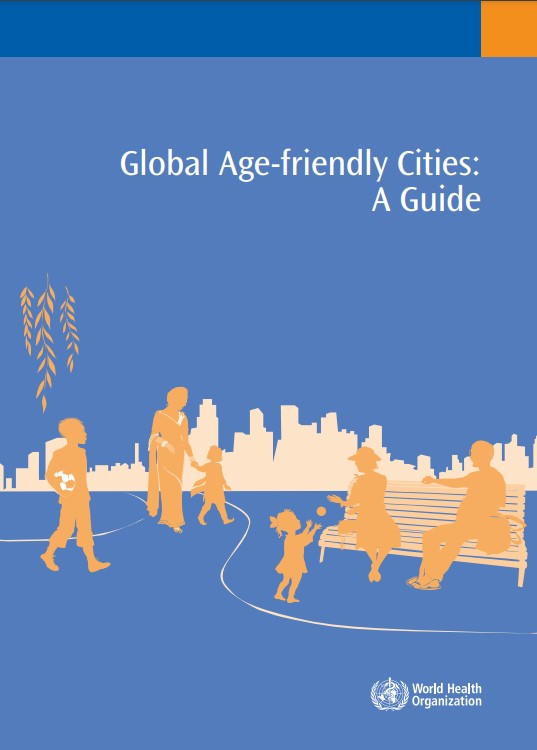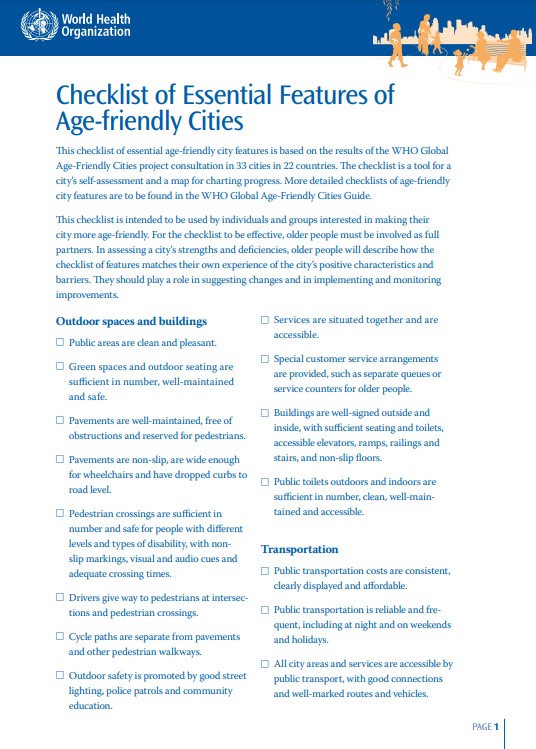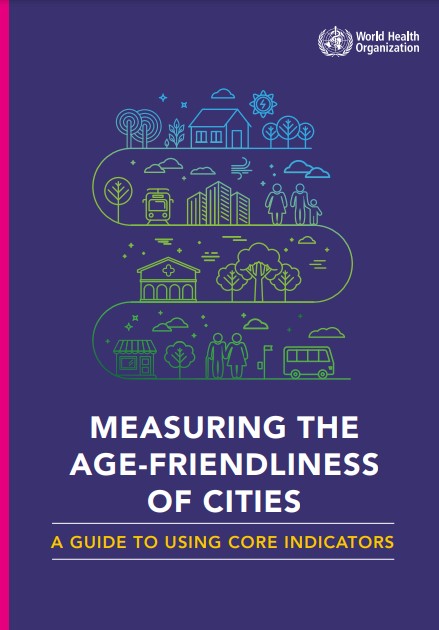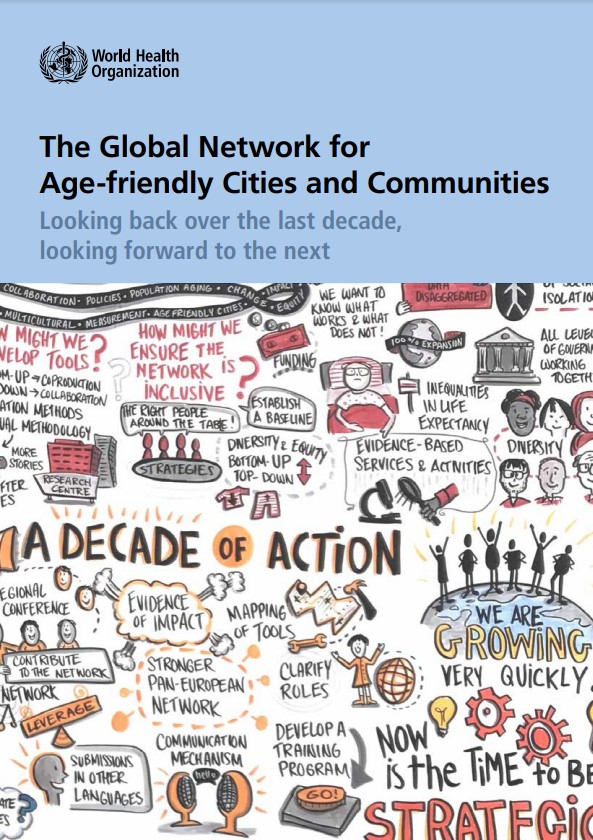Explore
Age-friendly City



Origin of age-friendly city
The World Health Organization (WHO) initiated the Global Age-friendly Cities Project in 2005. Based on the focus groups with elderly people, caregivers and service providers in 33 cities around the world, WHO identified the key features of an age-friendly city in eight domains of an urban life and highlighted elderly people’s concerns and daily issues they faced.





WHO Global Network for Age-friendly Cities and Communities
The WHO Global Network for Age-friendly Cities and Communities (“the Network”) was established in 2010 to connect cities and communities worldwide with the common vision of making their communities more age-friendly. The Network provides a global platform for information exchange, experience sharing, and mutual learning.
“An age-friendly city designs and adapts their natural and built environment for residents of all ages. It is barrier-free, designed for diversity, inclusive and cohesive, which enable people to stay active, connected and able to contribute to the economic, social, and cultural life in their community. Becoming age-friendly can make a city a choice for all generations – a great place to live, have a family and grow old happily.”
WHO Global Network for Age-friendly Cities and Communities




More resources about age-friendly city
World Health Organization publications on age-friendly city
The World Health Organization (WHO) has published five important publications relating to age-friendly city, including (i) a guide to provide the rationale and a practical, step-by-step approach for developing national programmes for age-friendly cities and communities; (ii) a guide to introduce the origin of AFC concept and 8 domains and engage cities to become more age-friendly; (iii) a checklist to set out the essential features of an age-friendly city; (iv) the guidelines on core indicators to measure age-friendliness; and (v) a report to give a global overview of the progress that cities and communities had made in the past decade towards becoming more age-friendly.
Public forums on 8 domains of an age-friendly city
Eight sessions of public forums were organised from 2017 to 2020 under the Jockey Club Age-friendly City Project aiming to provide a platform for different stakeholders and the public to exchange views on age-friendly issues in relation to 8 AFC domains.



“Age-friendly Tour” card game (Chinese version only)




















